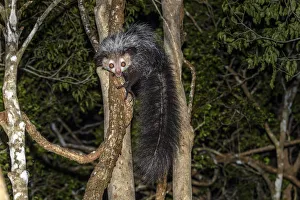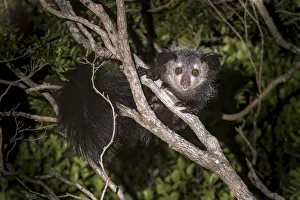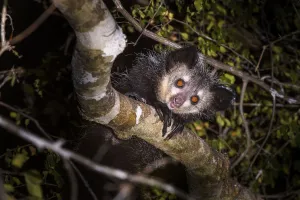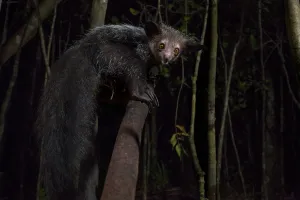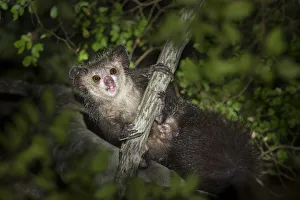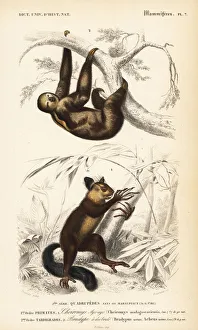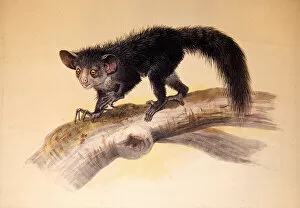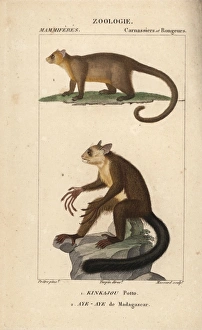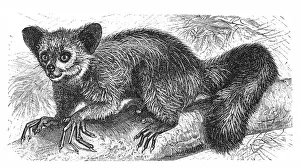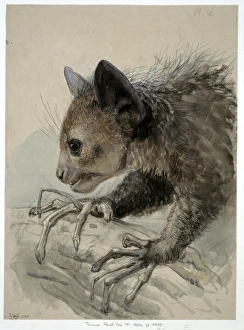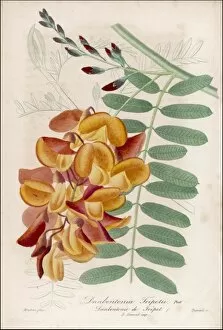Daubentonia Collection
The daubentonia, also known as the aye-aye, is a fascinating and unique creature found in the forests of Madagascar
All Professionally Made to Order for Quick Shipping
The daubentonia, also known as the aye-aye, is a fascinating and unique creature found in the forests of Madagascar. This nocturnal primate is highly specialized for its tree-dwelling lifestyle, with long fingers and sharp claws that allow it to easily navigate through the forest canopy. In Picture No. 10750671, we see an adult aye-aye actively foraging in the forest canopy at night. Its large ears and keen sense of hearing help it locate insects hiding within tree bark. With its slender fingers, it taps on the wood to detect hollow chambers where tasty grubs may be hiding. The RF image shows another adult aye-aye in action during nighttime. The dry leaves beneath its feet rustle as it moves gracefully through the branches, searching for food using its remarkable elongated middle finger. At Palmarium in Atsinanana, Madagascar, an aye-aye emerges from its nest at dusk. These creatures are known for their solitary nature and spend most of their lives high up in trees. Their presence is often elusive but crucial to maintaining balance within their ecosystem. In Bekaraoka Forest, Madagascar's endangered Aye-ayes can be seen looking down from branches at night. Their large eyes reflect light like tiny lanterns amidst the darkness while they scan their surroundings for potential prey or predators. Interestingly enough, this near-threatened species shares some similarities with brown-throated sloths as depicted together in one photo captioned "Aye-Ayes and Brown-Throated Sloth. " Both animals have adapted to arboreal lifestyles but belong to different taxonomic families. Dating back to 1861 (as shown by an old color lithograph), humans have been captivated by these enigmatic creatures' peculiar appearance and behavior. They possess distinctive features such as oversized ears that aid them in locating food sources hidden deep within trees.



